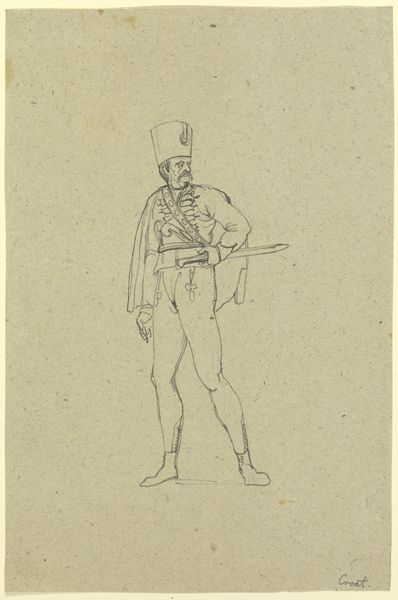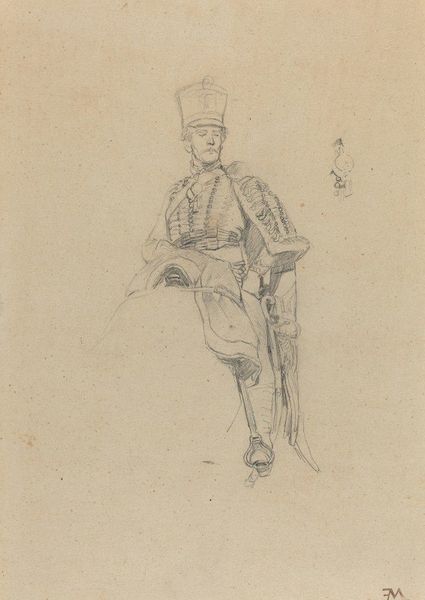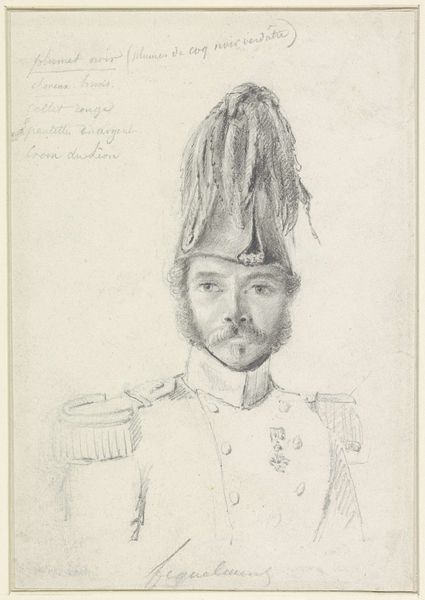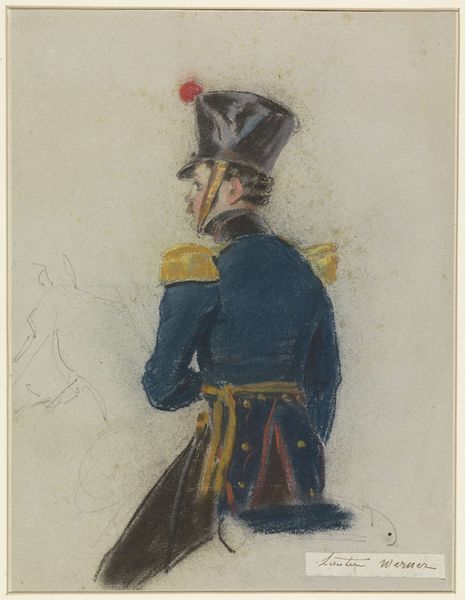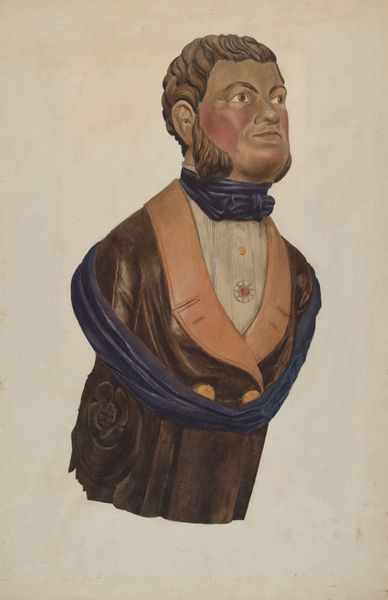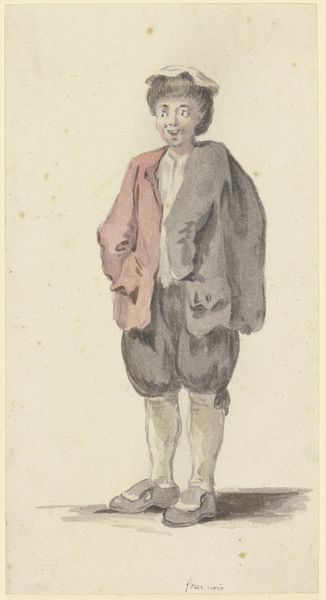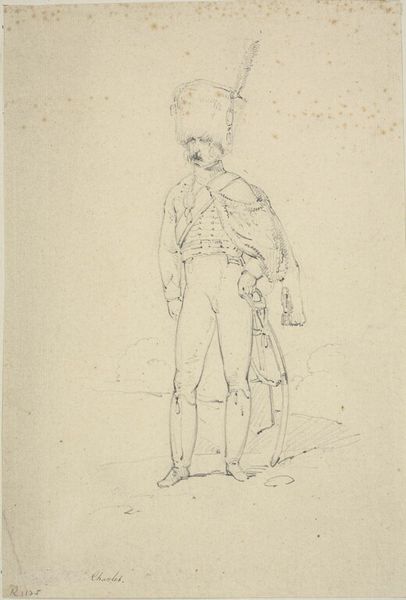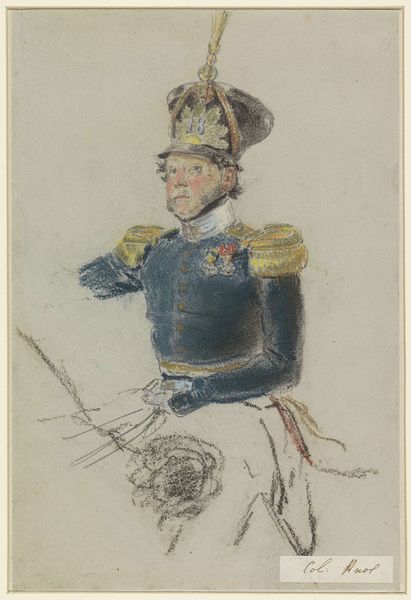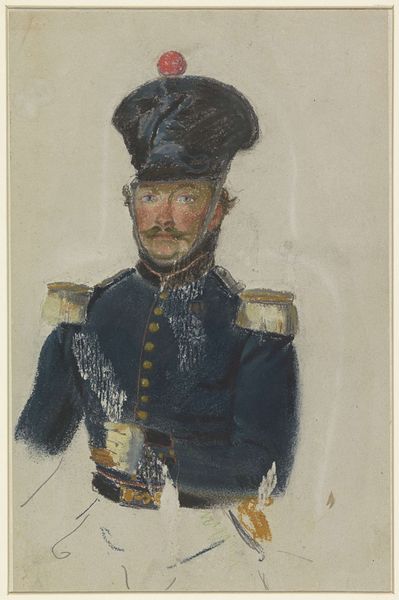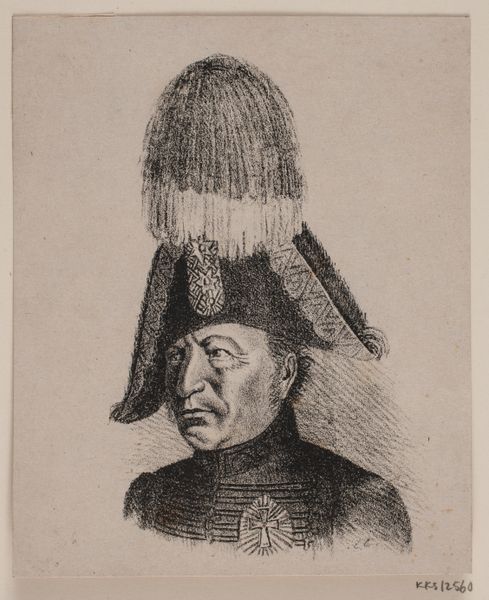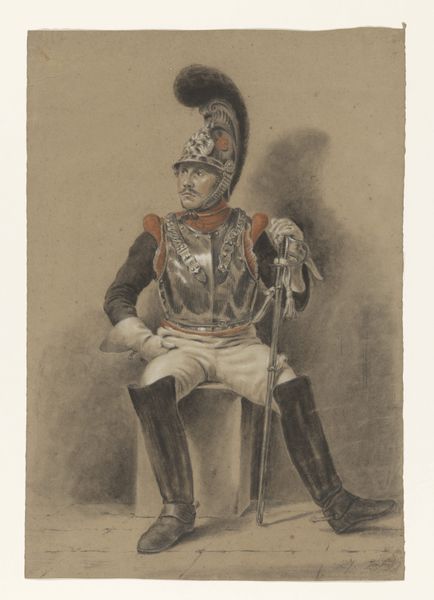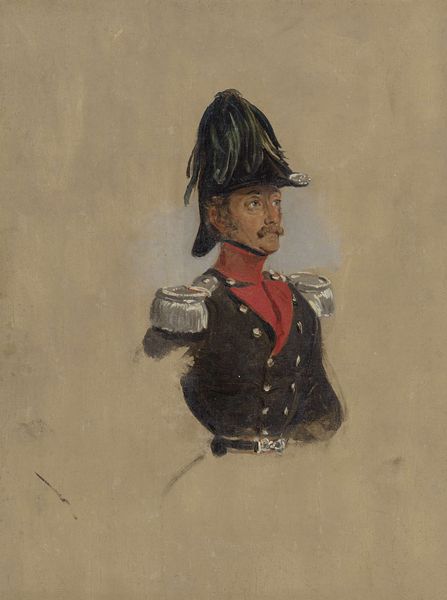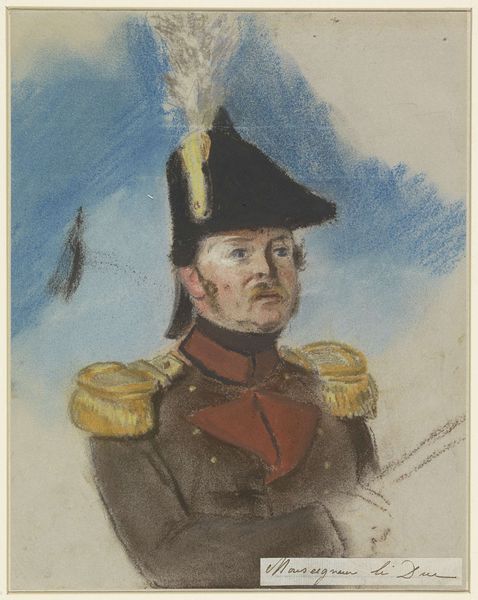
watercolor
#
portrait
#
watercolor
#
coloured pencil
#
romanticism
#
academic-art
#
watercolor
Dimensions: height 285 mm, width 223 mm
Copyright: Rijks Museum: Open Domain
Editor: Here we have Nicolaas Pieneman's "Portretstudie van kapitein T.S. Nabal," likely painted sometime between 1819 and 1860, using watercolor. It’s quite striking how unfinished the piece feels, almost like a sketch. What catches your eye about it? Curator: The material presence, or rather absence, is key. Watercolor, traditionally seen as preparatory or amateur, signals a devaluation of labor compared to oil portraits of the era. Think about the social standing implied in commissioning or even executing such a portrait. Is this "unfinished" quality indicative of a study, or perhaps of the captain’s shifting social status – captured by the speed of production via readily accessible watercolor as medium? Editor: That's interesting; it feels less formal because of the medium. So, instead of solely looking at it as portrait of an important man, it reveals about class and craft. Curator: Exactly! We see the materiality – the paper itself, the visible brushstrokes. What were the social and economic conditions that led Pieneman to choose watercolor for this particular subject? Consider also how the materiality challenges academic art traditions. Where does "high art" end, and everyday making begins? Is the subject matter less grand, or presented in a way that invites such association through choice of material? Editor: I hadn't thought about it like that, it makes you think about who watercolor painting was for at the time. Curator: It really urges us to consider the entire process of art making, and not only its finished form, and forces us to see how ingrained social stratifications affect artistic expression, including who is doing it, who is it for, what are the raw resources, where are they gathered, how long it takes to make, etc.. Editor: I will never be able to see another watercolor without thinking of the materials that the painting is made of and all the other complex networks around its production! Curator: Precisely, which enhances, for me at least, the rich social, political and even deeply intimate significance of material things.
Comments
No comments
Be the first to comment and join the conversation on the ultimate creative platform.
